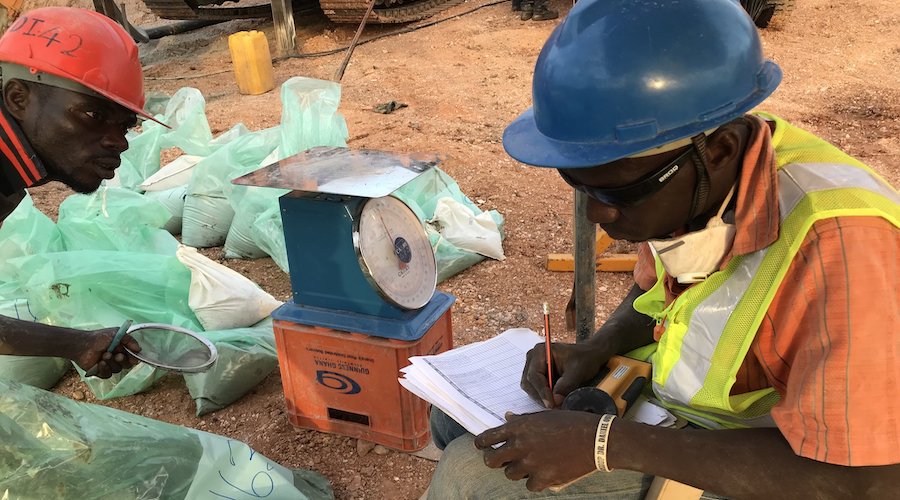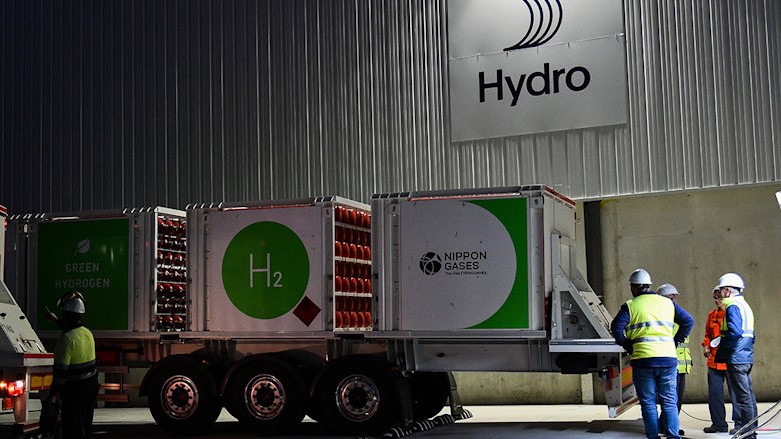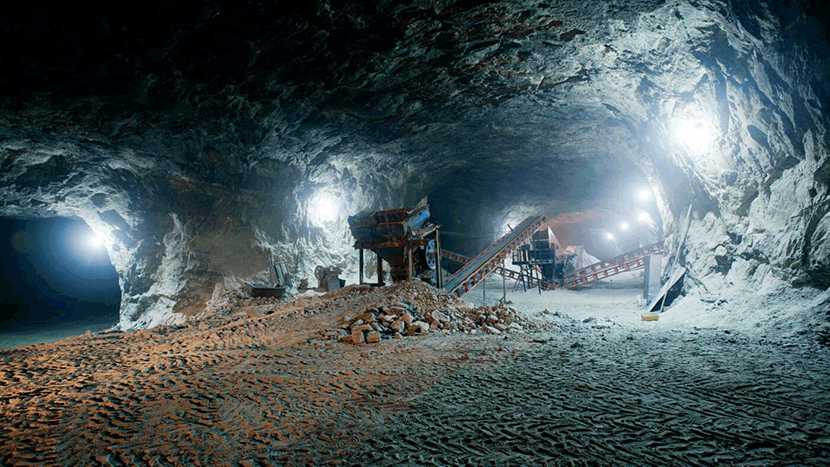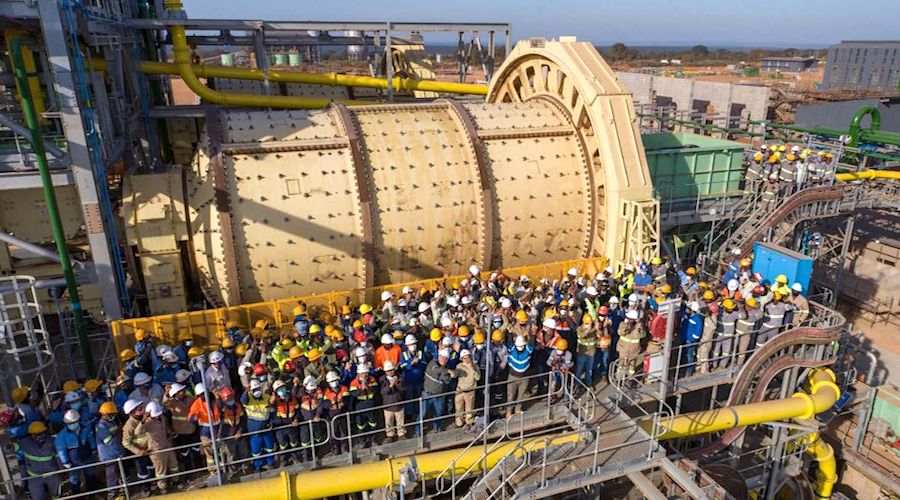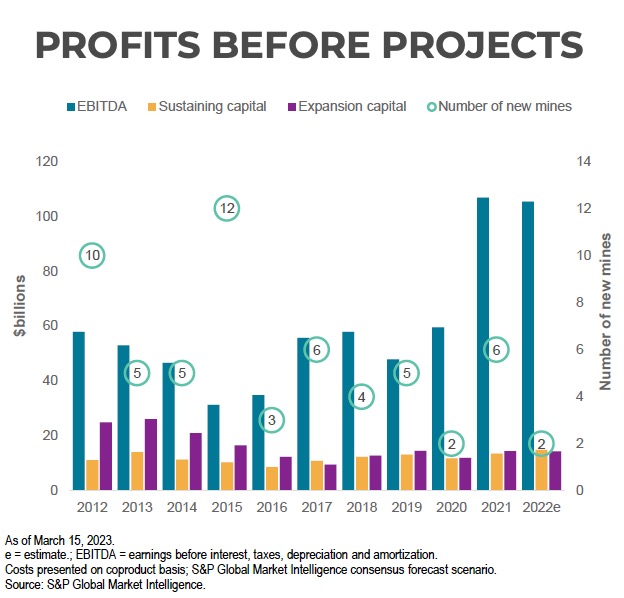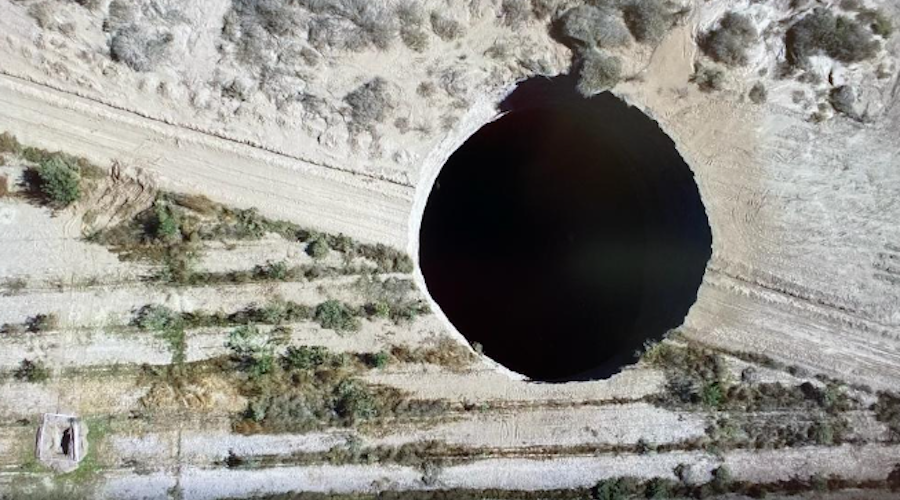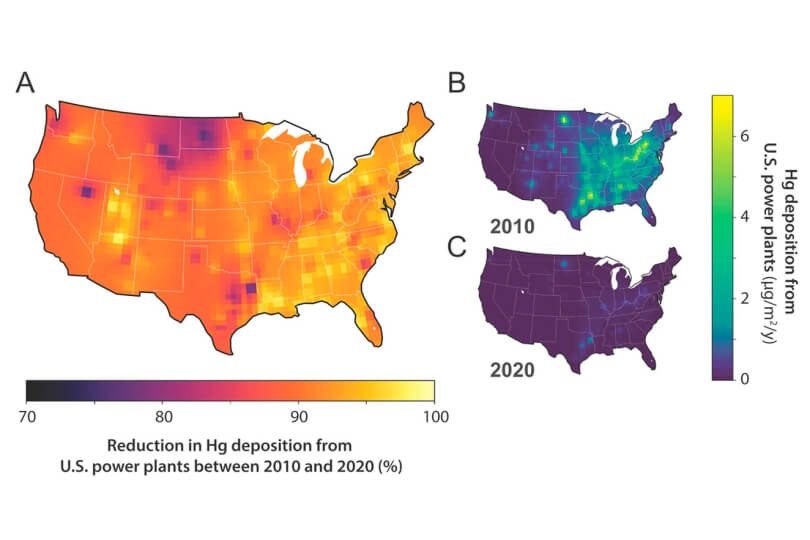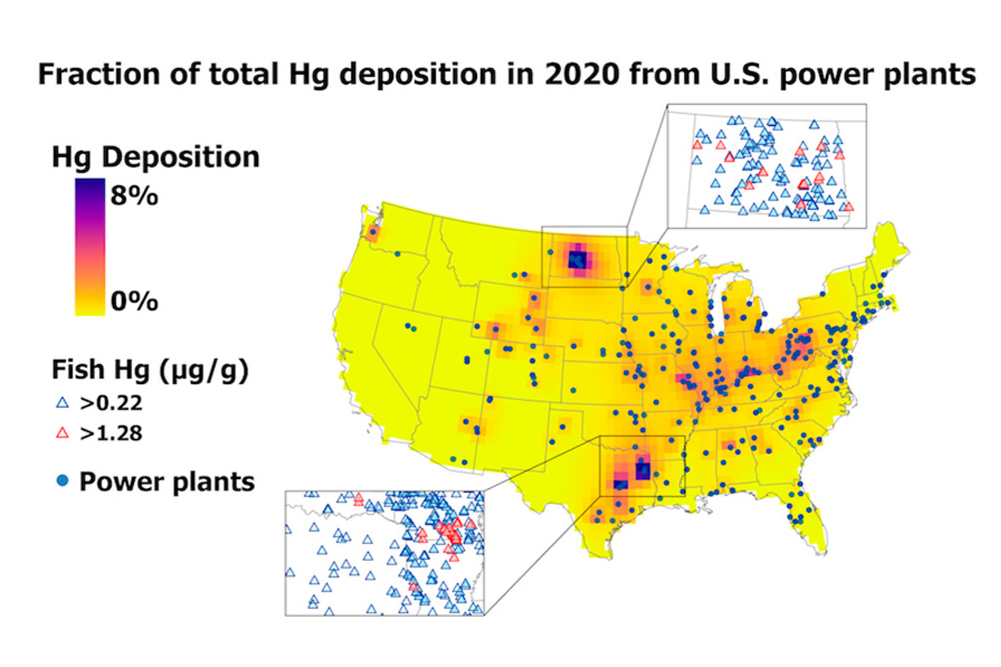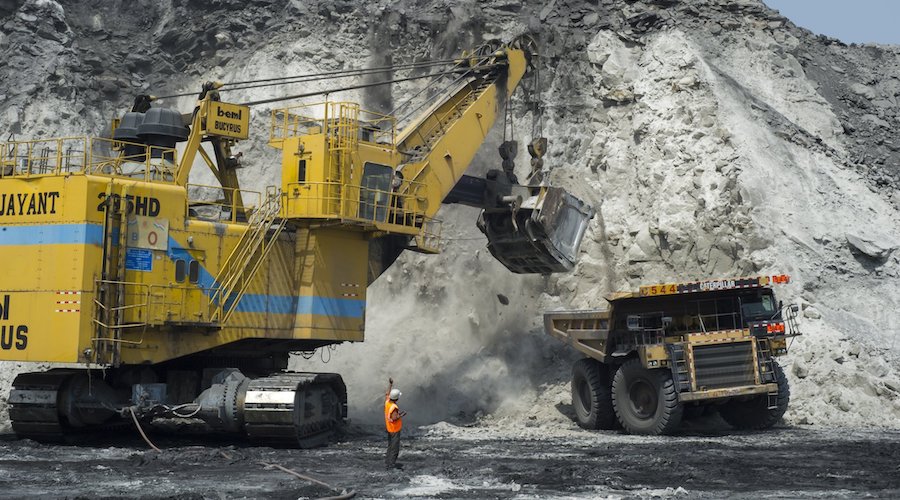How Nuclear Power Can Dethrone King Coal
- The report from the U.S. Department of Energy suggests that about 80% of retired or active coal plant sites in the United States could be converted to host advanced, small-scale nuclear reactors.
- Conversion from coal plants to nuclear power could result in savings up to $1 billion over the plant's lifetime and reduce emissions by up to 90%.
- Despite challenges related to cost, construction time, and regulatory issues, conversion from coal to nuclear power has the potential to retain workforces, stabilize the economy, and help the United States achieve its climate goals.
Over the past 15 years, the United States has undergone a significant transition away from coal-fired power plants. This transition is being driven by several factors, including environmental regulations, competition from natural gas, and the declining cost of renewable energy.
As coal-fired power plants are retired, there is a need for reliable and affordable zero-emission power replacements. To date, a large fraction of coal’s displacement has come from natural gas. Although it is cleaner than coal, natural gas is still a fossil fuel and therefore has associated greenhouse gas emissions.
Renewables sources like wind and solar power are scaling rapidly, but there are several challenges in using them to displace coal-fired power.
First, these sources tend to be decentralized, and require a lot of area for the power they produce. Second, these sources are intermittent, and therefore will require a lot more nameplate capacity to displace the same capacity from a coal-fired power plant. Certainly, these renewable sources will continue to grow in importance, but in the short-term, we can’t expect coal-fired power plants to be replaced with intermittent renewables.
However, nuclear power is a viable option for meeting this need. Nuclear power is a clean, dispatchable source of energy that can provide baseload power to the grid.
The report “Investigating Benefits and Challenges of Converting Retiring Coal Plants into Nuclear Plants” was released in 2022 by the U.S. Department of Energy. The report estimated that approximately 80% of retired or active coal plant sites in the United States are suitable to host advanced reactors smaller than the gigawatt scale.Related: Russia’s Year-Round Arctic Trade Route Initiative
The authors noted that converting coal plants to nuclear power could save money and reduce emissions. The report estimates that converting a coal plant to nuclear power could save the plant owner up to $1 billion over the lifetime of the plant, and that converting a coal plant to nuclear power could reduce emissions by up to 90%.
The International Energy Agency (IEA) published its own report on the potential for the displacement of coal-fired power in November 2022. The report, Coal in Net Zero Transitions, examines the role of coal in the global energy transition and identifies strategies for reducing coal-related emissions in a way that is rapid, secure, and people-centered.
The IEA report finds that coal is the largest emitter of energy-related carbon dioxide (CO2), accounting for 15 billion metric tons in 2021. Coal is also the largest source of electricity generation, accounting for 36% in 2021.
The report identifies three main pathways for reducing coal-related emissions:
- Rapid phase-out of unabated coal power: This pathway involves phasing out all coal power plants that do not capture and store their emissions by 2030. This pathway would require significant investment in clean energy technologies, but it would also deliver the largest emissions reductions in the shortest time.
- Gradual phase-out of unabated coal power: This pathway involves phasing out unabated coal power plants over a longer period, such as by 2040. This pathway would require less investment in clean energy technologies than the rapid phase-out pathway, but it would also deliver smaller emissions reductions.
- Continued use of coal with carbon capture and storage (CCS): This pathway involves using CCS technology to capture and store the emissions from coal power plants. CCS technology is still under development, but it has the potential to significantly reduce coal-related emissions.
The report finds that the rapid phase-out of unabated coal power is the most effective way to reduce coal-related emissions. Nuclear power is expected to play a key role in replacing coal-fired electricity generation. In the IEA’s Announced Pledges Scenario (APS), over 30 countries have shown interest in expanding nuclear capacity, with global capacity additions expected to average 18 GW annually from 2026 to 2030 triple the recent average of 6 GW from 2017 to 2021.
While China leads the market – accounting for almost 40% of all new nuclear capacity to 2030 — other countries such as France, India, Poland, the United Kingdom, and the United States have announced support or plans to invest in new nuclear projects. The APS expects an average of 20 GW of nuclear capacity to be added each year from 2030 through 2050, including small modular reactors that offer lower upfront costs and improved safety and waste management features.
There are certainly challenges and opportunities associated with converting coal plants to nuclear power. The biggest challenge is the cost and time to build new nuclear power plants. Some regulatory hurdles need to be overcome to convert coal plants to nuclear power. However, converting coal plants to nuclear power could help retain work forces at coal plants, stabilize the economy, while helping the United States meet its climate goals.
By Robert Rapier
- The report from the U.S. Department of Energy suggests that about 80% of retired or active coal plant sites in the United States could be converted to host advanced, small-scale nuclear reactors.
- Conversion from coal plants to nuclear power could result in savings up to $1 billion over the plant's lifetime and reduce emissions by up to 90%.
- Despite challenges related to cost, construction time, and regulatory issues, conversion from coal to nuclear power has the potential to retain workforces, stabilize the economy, and help the United States achieve its climate goals.
Over the past 15 years, the United States has undergone a significant transition away from coal-fired power plants. This transition is being driven by several factors, including environmental regulations, competition from natural gas, and the declining cost of renewable energy.
As coal-fired power plants are retired, there is a need for reliable and affordable zero-emission power replacements. To date, a large fraction of coal’s displacement has come from natural gas. Although it is cleaner than coal, natural gas is still a fossil fuel and therefore has associated greenhouse gas emissions.
Renewables sources like wind and solar power are scaling rapidly, but there are several challenges in using them to displace coal-fired power.
First, these sources tend to be decentralized, and require a lot of area for the power they produce. Second, these sources are intermittent, and therefore will require a lot more nameplate capacity to displace the same capacity from a coal-fired power plant. Certainly, these renewable sources will continue to grow in importance, but in the short-term, we can’t expect coal-fired power plants to be replaced with intermittent renewables.
However, nuclear power is a viable option for meeting this need. Nuclear power is a clean, dispatchable source of energy that can provide baseload power to the grid.
The report “Investigating Benefits and Challenges of Converting Retiring Coal Plants into Nuclear Plants” was released in 2022 by the U.S. Department of Energy. The report estimated that approximately 80% of retired or active coal plant sites in the United States are suitable to host advanced reactors smaller than the gigawatt scale.Related: Russia’s Year-Round Arctic Trade Route Initiative
The authors noted that converting coal plants to nuclear power could save money and reduce emissions. The report estimates that converting a coal plant to nuclear power could save the plant owner up to $1 billion over the lifetime of the plant, and that converting a coal plant to nuclear power could reduce emissions by up to 90%.
The International Energy Agency (IEA) published its own report on the potential for the displacement of coal-fired power in November 2022. The report, Coal in Net Zero Transitions, examines the role of coal in the global energy transition and identifies strategies for reducing coal-related emissions in a way that is rapid, secure, and people-centered.
The IEA report finds that coal is the largest emitter of energy-related carbon dioxide (CO2), accounting for 15 billion metric tons in 2021. Coal is also the largest source of electricity generation, accounting for 36% in 2021.
The report identifies three main pathways for reducing coal-related emissions:
- Rapid phase-out of unabated coal power: This pathway involves phasing out all coal power plants that do not capture and store their emissions by 2030. This pathway would require significant investment in clean energy technologies, but it would also deliver the largest emissions reductions in the shortest time.
- Gradual phase-out of unabated coal power: This pathway involves phasing out unabated coal power plants over a longer period, such as by 2040. This pathway would require less investment in clean energy technologies than the rapid phase-out pathway, but it would also deliver smaller emissions reductions.
- Continued use of coal with carbon capture and storage (CCS): This pathway involves using CCS technology to capture and store the emissions from coal power plants. CCS technology is still under development, but it has the potential to significantly reduce coal-related emissions.
The report finds that the rapid phase-out of unabated coal power is the most effective way to reduce coal-related emissions. Nuclear power is expected to play a key role in replacing coal-fired electricity generation. In the IEA’s Announced Pledges Scenario (APS), over 30 countries have shown interest in expanding nuclear capacity, with global capacity additions expected to average 18 GW annually from 2026 to 2030 triple the recent average of 6 GW from 2017 to 2021.
While China leads the market – accounting for almost 40% of all new nuclear capacity to 2030 — other countries such as France, India, Poland, the United Kingdom, and the United States have announced support or plans to invest in new nuclear projects. The APS expects an average of 20 GW of nuclear capacity to be added each year from 2030 through 2050, including small modular reactors that offer lower upfront costs and improved safety and waste management features.
There are certainly challenges and opportunities associated with converting coal plants to nuclear power. The biggest challenge is the cost and time to build new nuclear power plants. Some regulatory hurdles need to be overcome to convert coal plants to nuclear power. However, converting coal plants to nuclear power could help retain work forces at coal plants, stabilize the economy, while helping the United States meet its climate goals.
By Robert Rapier
US regulators conclude Hermes safety review
16 June 2023
The US Nuclear Regulatory Commission (NRC) has issued its Final Safety Evaluation Report (FSER) for Kairos Power's application to build the Hermes molten salt test reactor at a site in Oak Ridge, Tennessee. The company says it expects to receive a construction permit for the first-of-a-kind reactor later this year.
.jpg?ext=.jpg) How the KP-FHR could look (Image: Kairos)
How the KP-FHR could look (Image: Kairos)NRC's evaluation concludes that there are no safety aspects that would preclude issuing a construction permit for the reactor and comes after the agency's independent Advisory Committee on Reactor Safeguards provided the results of its review, recommending that the construction permit for the Hermes demonstration reactor be approved.
Kairos submitted its permit application in two parts, in September and October 2021, but the company began extensive pre-application engagement with the NRC in 2018. The NRC accepted the Hermes CPA for review in November 2021, committing to an accelerated 21-month review timeline, and has completed it in 18 months - well ahead of schedule, according to Andrea Veil, director of the NRC's Office of Nuclear Reactor Regulation. "This reflects the NRC's commitment to maintaining safety, by applying risk-informed approaches, while improving efficiency," she said.
"We are pleased to have worked closely with the NRC staff to complete a thorough, efficient, and innovative review, which is encouraging for future deployment of advanced nuclear reactors," said Kairos Vice President of Regulatory Affairs Peter Hastings. "We look forward to continuing our close collaboration with the staff and the Commission to support the Final Environmental Impact Statement and complete the mandatory hearing."
Kairos is taking a "rapid iterative" approach to development, which the company says reduces risk on the path to commercialisation and establishes confidence for build and construction. The company will have to submit a separate application in the future for an operating licence. It said the Hermes construction permit application is laying the groundwork for this application which will, in its turn, generate lessons to inform the license applications for future commercial deployments.
Hermes will be a 35 MW (thermal) non-power version of the company's fluoride salt-cooled high temperature reactor - the KP-FHR, which uses TRISO (TRI-structural ISOtropic) fuel pebbles with a low-pressure fluoride salt coolant. The demonstration reactor has been selected by the US Department of Energy to receive USD629 million in cost-shared risk reduction funding over seven years under the Advanced Reactor Demonstration Program, and is intended to provide operational data to support the development of a larger version for commercial deployment.
A site at the East Tennessee Technology Park in Oak Ridge has been selected for the demonstration reactor, and TRISO fuel pebbles will be produced at the Los Alamos National Laboratory's Low Enriched Fuel Fabrication Facility under an agreement announced in late 2022. The company has also commissioned a plant to produce high-purity fluoride salt coolant - known as Flibe - in partnership with Materion Corporation. The Molten Salt Purification Plant, in Elmore, Ohio, has now shipped its first batch of the coolant to Kairos Power’s testing facility in Albuquerque, New Mexico, to support Engineering Test Unit (ETU) operations, the company said in a separate announcement.
Centrus HALEU plant receives regulatory clearance
15 June 2023
The US nuclear fuel and services company Centrus has completed its operational readiness reviews and received regulatory approval to possess uranium at its Piketon, Ohio site and introduce uranium into the cascade of centrifuges it has constructed there. The company said it remains on track to begin production of high-assay low-enriched uranium (HALEU) at the plant before the end of the year.
.jpg?ext=.jpg) The Piketon centrifuge cascade (Image: Centrus)
The Piketon centrifuge cascade (Image: Centrus)
Centrus began construction of the demonstration cascade of 16 centrifuges in 2019 under contract with the US Department of Energy (DOE), and last year secured a further USD150 million of cost-shared funding to finish the cascade, complete final regulatory steps, begin operating the cascade, and produce up to 20 kg of HALEU by the end of this year. The operational readiness reviews were required under the Centrus licence from the US Nuclear Regulatory Commission (NRC), which was amended in 2021 to allow the Piketon facility to produce HALEU.
HALEU fuel contains uranium enriched to between 5% and 20% uranium-235 - higher than the uranium fuel used in light-water reactors currently in operation, which typically contains up to 5% uranium-235. It will be needed by most of the advanced reactor designs being developed under the DOE's Advanced Reactor Demonstration Program. But the lack of a commercial supply chain to support these reactors has prompted the DOE to launch a programme to stimulate the development of a domestic source of HALEU.
"Centrus continues to meet every contract milestone on time and on budget, putting us in position to pioneer US HALEU production to meet the needs of the department and the nuclear industry," said Centrus President and CEO Daniel Poneman. "By establishing a secure, reliable American source of HALEU, we can help enable the commercialisation of a whole new generation of US-designed advanced nuclear reactors to supply the carbon-free energy the world needs."
Construction of the cascade and most of the support systems is now complete, and initial testing has been completed, Centrus said. Next steps will be the construction of the on-site HALEU storage area and final testing activities prior to operation, with initial HALEU production set to begin by the end of the year.
Centrus has previously said it could scale up the Piketon facility for expanded HALEU production, subject to sufficient funding or offtake contracts. A full cascade of 120 individual centrifuge machines, with a combined capacity of approximately 6,000 kilograms of HALEU per year, could be brought online within about 42 months of securing funding, according to the company.
USA plants continue to rely on foreign sources of uranium supply
15 June 2023
US nuclear plant owners and operators purchased less uranium in 2022 than in 2021, and at a higher price, according to the US Energy Information Administration's (EIA) latest annual uranium marketing report. Most of the uranium delivered in 2022 was of foreign origin, with Canada and Kazakhstan together providing more than half the total.
.jpg?ext=.jpg) US uranium purchases continue to be dominated by foreign suppliers (amounts are thousands of pounds U3O8e) (Image: EIA)
US uranium purchases continue to be dominated by foreign suppliers (amounts are thousands of pounds U3O8e) (Image: EIA)
The EIA's 2022 Uranium Marketing Annual Report, published on 13 June, provides detailed data on uranium marketing activities in the USA from 2017 to 2022, and summary data back to 2001. The information is based on data collected through the EIA's Uranium Marketing Annual Survey - known as Form EIA-858 - which collects data on contracts, deliveries, enrichment services purchased, inventories, use in fuel assemblies, feed deliveries to enrichers, and unfilled market requirements for the next 10 years.
The 40.5 million pounds U3O8 equivalent (15,578 tU) total uranium purchased by the owners and operators of the USA's civilian nuclear power reactors in 2022 was 13% down on 2021's total of 46.7 million pounds U3O8e. The weighted average price of USD39.08 per pound for 2022's purchases was 15% higher than the 2021's weighted average price of USD33.91 per pound, and the highest since 2016.
Most of 2022's uranium deliveries were of foreign origin, with Canada the top source at 27% of total deliveries, followed by Kazakhstan (25%), Uzbekistan (11%) and Australia (9%). US -origin material accounted for 5% of the total. Some 15% of the uranium delivered was purchased under spot contracts at a weighted average price of USD40.70 per pound, with the rest under long-term contracts at a weighted average price of USD38.81 per pound.
A total of 35 million pounds U3O8e of natural uranium feed was delivered to enrichers, with 41% of the feed going to US enrichment suppliers, and some 14.2 million SWU of enrichment services purchased by US plant owners and operators in 2022. Nearly three-quarters of this - 73% - was from foreign-origin SWU. Some 3.4 million SWU was supplied by Russia - only slightly less than the 3.9 million of US-origin SWU purchased in the year.
At the end of the year, total US commercial uranium inventories (including inventories owned by plant owners and operators, brokers, converters, enrichers, fabricators, producers and traders) stood at 140 million pounds U3O8e, down 1% from the 141.7 million pounds total at the end of 2021. Contracted deliveries and unfilled market requirements represent maximum anticipated market requirements of 402 million pounds U3O8e over the next 10 years for plant owners and operators, the report found.
Researched and written by World Nuclear News





